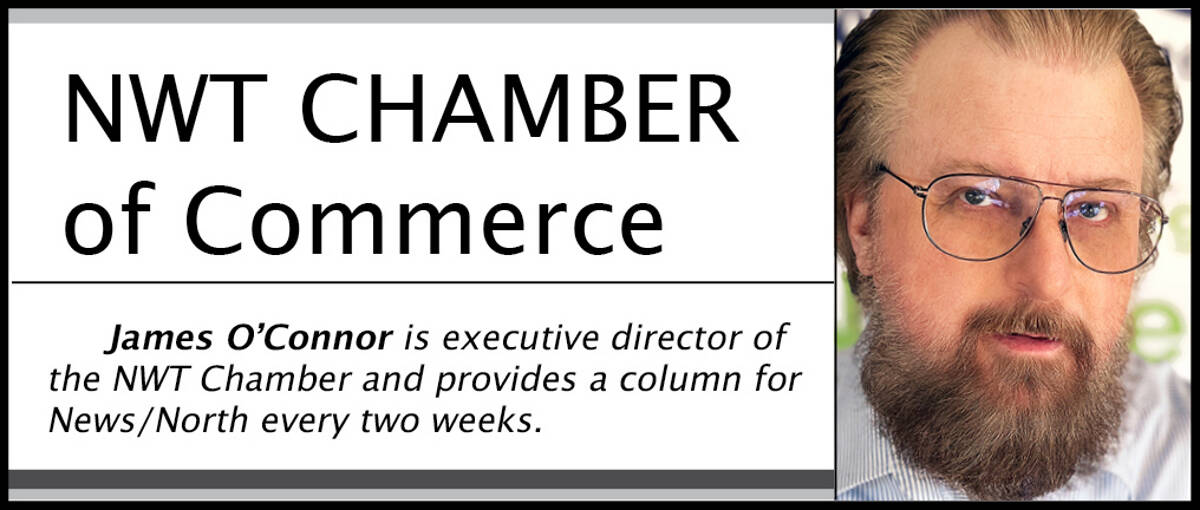If you’re looking for a place where political interests collide with business, labour, academics and social justice groups, then it’s the minimum wage.
Along with abortion, rent controls and the retention of the monarchy, the lowest hourly wage legally allowed by law is a third rail issue always sure to jolt hot-take responses from those on all sides of the controversy.
It was obvious many of the responders on our social media channels to our Aug. 18 media release entitled, “NWT Chamber of Commerce questions transparency, accountability of GNWT’s new minimum wage scheme,” didn’t read the release. Or really understand the headline, for that matter.
The release detailed our response to the territorial government’s decision to squash its Minimum Wage Committee, established in 2013 after an internal study determined it was the best method.

The Chamber’s board of directors is concerned that by removing public oversight into its minimum wage policy, the GNWT has taken full control over future increases to the minimum wage, usurping its responsibility to be accountable to taxpayers and going back on pledges to be transparent.
It seems the GNWT believes it will be able to fend off political and public blowback to future hikes to the NWT’s minimum wage by blaming it on a nebulous “formula,” somehow based on the percentage of change in the Consumer Price Index for Yellowknife and the percentage of change in the average hourly wage in the territory for the preceding calendar year.
This calculation, as presented, is not clear and unknown, so the NWT Chamber called on Employment Minister R.J. Simpson to fully explain the benefit of dissolving the Minimum Wage Committee. To date, we have not heard back from Simpson. We hope his decision will be questioned by regular MLAs when the 19th Assembly reconvenes in mid-October.
For the record: the NWT Chamber of Commerce is not against sensible minimum wage increases, we just want to make sure the process has proper public oversight.
The federal government identifies various intentions behind having a minimum wage, which has been in widespread force in Canada since 1960, including to protect non-unionized workers, to create incentives to work, to address gender or ethnic pay inequality.
A study from 2018, noted by the feds, found a 10-per-cent increase in the minimum wage is associated with a one- to four-per-cent drop in employment rates for both male and female teens. Those University of Waterloo economists also found “an increase in the minimum wage is associated with lower employment of prime-aged immigrants.”
A 2009 paper noted many minimum wage earners “do not live in poor households,” as they may be teens living with their parents, or minimum wage earners in dual-income households.
Tinkering with the minimum wage of any jurisdiction with the goal to “reduce the numbers of the working poor,” is an often-used catchphrase heard from labour and social justice movements. With the rate of inflation the country is now suffering — with no clear plans from Ottawa on how to help ease the pain — raising a minimum wage a half-dollar will not reduce poverty or the working poor.
What is needed everywhere is a sound fiscal plan from the federal and territorial governments on how to tamp down the lid on inflation and ways to increase good, well-paying jobs across sectors and from sea-to-sea-to sea.
If the federal government believes more temporary financial relief is needed in the form of emergency social program boosts for those in real need, then that could be done rather quickly through higher pension, child benefit or GST payments.
And the carbon tax could be cut. For good.
Very few people in the NWT actually work for just the minimum wage. A true living wage in the NWT is obviously going to be much more than the minimum wage. Some employers do choose the living wage, as expressed by Alternatives North, as their minimum pay for staff as part of an overall retention plan.
As NWT Chamber president Yanik D’Aigle stated in the media release: “It’s not about not paying people an honest wage for an honest day’s work. It’s really about making sure that everybody has the opportunity to thrive.”
